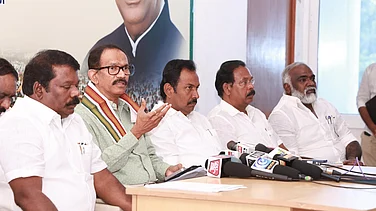Therefore prepare thee to cut off the flesh.
Shed thou no blood, nor cut thou less nor more
But just a pound of flesh: if thou cut’st more
Or less than a just pound, be it but so much
As makes it light or heavy in the substance,
Or the division of the twentieth part
Of one poor scruple, nay, if the scale do turn
But in the estimation of a hair,
Thou diest and all thy goods are confiscate.
—Portia (Shakespeare’s Merchant of Venice, playing Doctor of Law)
Shakespeare’s Portia has to be one of the richest characters in literature. Often seen as a leading female character, there is more than meets the eye. Her character is infinite by complex and layered. Historically, women in Shakespearean times were not allowed on stage, let alone courts. In fact, young men played women on stage. Imagine being a part of an audience where a young male actor is playing Portia. And then there is Portia, who is a woman, who transforms into a young man and meets the ends of justice, not only saving the protagonist from losing a pound of flesh, but also teaching a moral lesson against greed to the moneylender. She does this using a technical aspect of the law—bringing in intellect that matches (if not surpasses) that of any man in the courtroom (and the audience). The layers of richness are truly commendable. Shakespeare, who was well-acquainted with the legal profession, makes a subtle yet bold statement. Consciously, he at least establishes that women are more than capable of being in the courtroom, and possibly even on stage.
We see the ghosts of exclusion, separated by centuries and continents, being put to rest in this scene. But they continue to haunt us. Towards the end of the 19th century, in Illinois, the court where Myra Bradwell wanted to enrol as a lawyer shockingly and patronisingly ruled that “the natural and proper timidity and delicacy which belongs to the female sex evidently unfits it for many of the occupations of civil life” and “the paramount destiny and mission of woman are to fulfil the noble and benign offices of wife and mother. This is the law of the Creator” (Bradwell v. Illinois).
In India, the case of Regina Guha in 1916 was one such moment. Guha had all the qualifications to enrol as an advocate. She had competently passed the examinations. Yet, she was not allowed, as it was interpreted that the word ‘persons’ in the Legal Practitioners Act, 1879, excluded women. Admittedly, the judges were clear on not going into the merits of the exclusion, and simply gave an interpretation of the law rather than an analysis of it. Sadly, Guha died before women were admitted to the profession. Sudhanshubala Hazra was another case. She was also denied the right by the Patna high court.
Nearly half-a-decade later, the first woman vakil was enrolled, Cornelia Sorabji. There was a systematic shift throughout the world during this time. Legend has it that part of the convincing she used in the courtrooms was that she could take on some cases that involved pardanashin (veiled) women, ironically using exclusion as an inclusionary measure. Following that, there were many firsts for women. Much before the Supreme Court of England and Wales (from which the Indian Supreme Court drew some precedents)—India appointed the first woman to the Supreme Court in 1989, Justice Fatima Beevi. It was not until 2009 that England and Wales got their first woman Supreme Court Justice. The first woman Chief Justice of any Indian state was the formidable Justice Leila Seth. And the first woman to have a portrait in the Supreme Court Library was Kapila Hingorani, known for her work in public interest litigation. Justice B.V. Nagarathna is expected to be the first ever woman Chief Justice of the Supreme Court of India in 2027.
With the number of unprecedented elevations of women to the Supreme Court of late, the ratio is better than ever before. Nonetheless, a lot needs to be done. In some trial courts, basic facilities like washrooms and toilets are unavailable for women. The infrastructure needs to be one that builds itself through the length and breadth of the system, starting with basic amenities to more nuanced inclusionary measures. Justice Seth, for instance, recounts in her autobiography how she was always conscious of the judgments she gave, as what she wrote reflected not only on her, but on all women. Sensitivity around diversity and the need for it as a non-negotiable value must be inculcated right from law school. Workplaces, similarly, must be sensitive and equipped to provide support to all lawyers.
Law inherently is a profession that deals with rights, equality, justice, representation and fairness. It also inculcates the values of inclusion. It is thus crucial that the institutions, systems and processes of law reflect these core values. The maxim that, ‘Justice must not only be done, but must also be seen to be done’ is equally true of the institution of law. As a progressive profession, it must reflect these values. A part of justice in the common psyche is its ownership and enfranchisement. Fair representation, thus, is a feature that brings to the law this essential dimension and belongingness. Most importantly, it must be underlined that the onus of increasing diversity lies on all of us. As a society, we all benefit from diversity of views, voices and opinions.
Since Shakespeare’s Portia, we have come a long way. A lot has been done. A lot remains to be done. Some decidedly positive steps taken in the last few years have gone a long way in making the field accessible and inspiring confidence in ways that are productive and effective. The journey has started. Or perhaps it started with Portia? Or even before? One thing is certain. With our increased understanding of the world, technological advances and commitment to equality, we can be the first generation in history that makes its institutions truly inclusive, diverse and representative of the population.
(This appeared in the print edition as "Women And The Law")
(Views expressed are personal)
Vishavjeet Chaudhary is a Delhi-based advocate and a door tenant at a London set
























